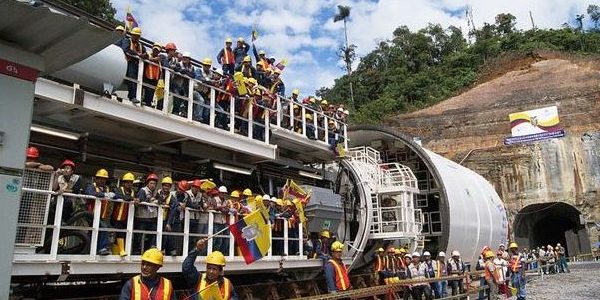Interesting article on the future of hydroelectric power in LATAM and specifically the Amazon with specific reference to largest project 350 has ever been involved with.
Damming or damning the Amazon: Assessing Ecuador / China cooperation
This was the largest project Carbon 350 worked on, where our role was as Lead UNFCCC Accreditor; proving to The UNFCCC that the project is worthy of registration with the United Nations Framework Convention on Climate Change and as such can access the subsidy mechanisms available, finding a buyer for the credit stream, negotiating the terms of sale, and managing the process of verification, issuance and onward sale.
Further details on the project can be found in the link below from the national power company of Ecuador.
https://www.celec.gob.ec/cocacodosinclair/index.php
The Project Design Document we prepared for the UNFCCC Registration Process is linked as below. As a result of the project, 1/3 of Ecuador’s power comes from this project alone which provides 24 hour power (no intermittancy), and Ecuador is now a net exporter of energy.
PDD COCASINCLAIR V2 Carbon 350 Ltd
Our main challenge for the accreditation and registration of the project (based on us having been involved in circa 20 previous project at this stage, so having a decent idea of what we were doing), was proving to International Rivers that the project’s environmental impact would be negligible.
International Rivers has the gravitas and stature to derail any hydroelectric project in terms of accessing the subsidy and perhaps the whole project), through the Stakeholder Comments process and evaluation period in the projects accreditation cycle. These submissions / comment are considered by The Clean Development Executive Board when the project goes for registration under the UNFCCC. Obviously, the United Nations won’t lend its name and subsidy to any project that isn’t environmentally acceptable.
Obviously other factors are considered. The main theme with large hydro has in the past been additionality. This is defined as “are the emission reductions created by the project, versus the base line scenario (the existing carbon intensity for producing electricity), additional to the business as usual scenario. In other words, stepping away from management speak: would the project have gone ahead anyway in absence of the additional subsidy. Alot of the large hydro were so profitably anyway, that the EB objected and decline registration, so there was a fine line to walk in the accreditation process.
Overall, it was a fascinating and engaging business, and was actually a huge success as circa 12,000 environmental projects happened via the UNFCCC, before Kyoto Protocol lost its way. We hope these mechanism come back – at least with these you avoided domestic governments continual policy changes and had a stable platform to work off.
This information should give PPM’s investors, potential investors and other counter parties an idea of what Carbon 350 actually did in the years 2008 through to 2012 and what it may do in the future under The Paris Agreement.
Nick Dimmock
